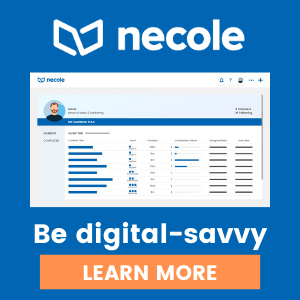Language, Learning and Leadership: The Key To Understanding Cultures

There is no curse in Elvish, Entish, or the tongues of men for this treachery.
– Treebeard, after witnessing the destruction of the forest in JRR Tolkien’s The Two Towers
Languages are complex codes, but they are extremely fascinating for the same reason. A set of words, translated into different languages can actually hold different meanings – or sometimes, may have no meaning at all.
There are thousands of languages – documented and undocumented – spoken across the world today. The average person will not be able to master all of them, but throughout our lives, we’d be exposed to people from various cultures who speak a variety of languages.
In a time of globalisation, the need to communicate accurately and connect with diverse groups of people has become crucial. Hence, the ability to grasp different languages becomes key to promoting social cohesion, deeper and broader understanding of cultures and, eventually, better decision making.
Cognitive and emotional benefits
An interesting piece published on the World Economic Forum website – written by Amy Thompson, an associate professor of applied linguistics from the University of South Florida – asserts that a “bilingual brain becomes better at filtering out distractions”, and that “learning multiple languages improves creativity”.
Thompson says that learning multiple languages can have cognitive and emotional benefits. It can happen in two ways:
1) It allows people to see and learn new ways of doing things; this is called ‘cultural competence’.
The learning of languages becomes a window into another culture. This is promising because now the learner is able to understand the uniqueness of another culture. A curious learner of language will then have the opportunity to dive deep into the history, cultural evolution and the origins of the language. Learning a new language can lead you to wider understanding of context and nuances unique to a specific culture.
2) Learning a new language allows a person to be more at ease in unfamiliar situations. It increases a person’s ‘tolerance to ambiguity’.
Interestingly, we live in a VUCA world; volatile, uncertain, complex and ambiguous. Thompson says that “someone with a high tolerance of ambiguity finds unfamiliar situations exciting, rather than frightening.” One might say that this has a direct link to how well we innovate, invent, and manage disruption that happens in the various aspects of our lives – professional, academic and even social spaces.
There’s less anxiety associated with change – and we know that change is the only constant.
Today, we live in a borderless digital time and age. Our exposure to different cultures, languages, styles and even stereotypes is higher, but at the same time, there’s also a greater opportunity to understand new cultures through the learning of languages.
We’re now able to easily create – and even curate – these lessons. There’s no end to the learning journey, and the essence of learning is the ability to communicate effectively. We can now share the richness of our individual cultures with one another by sharing the contextual knowledge within our languages.
How can this learning happen?
Learning starts from an early age, and schools make the perfect environment to learn languages. Traditional classroom learning, or perhaps social learning is never an outdated way to learn. We learn best in a social environment, with a teacher physically present and with friends to teach and learn from.
Social learning helps us overcome insecurities especially when it comes to learning languages, mainly because of the trust that exists among a group of friends. It feels easier to make mistakes and not judged for it. Teased, for sure, but it remains a relatively safe space to learn.
Related: Learning Through Collaboration: Social E-Learning
There’s an undeniable level of acceptance and understanding that we can achieve when we speak to someone in their language. It shows we’ve made the effort to want to learn their language and culture; it shows a degree of respect. Language holds the key to truly understanding a person, people and their respective cultures.
Technology has come a long way since the days of overhead projectors. Today, we have tools like Google Classroom, Apple Education or Microsoft Education. There’s learning through virtual reality, augmented reality, artificial intelligence, and so much more. These tools bring an incredible amount of learning power into the classroom. It is now just a matter of building apps to teach something.
In the corporate setting, organisations invest in Learning Management Systems (LMS) to enable employees to learn at their own pace, and in their own space.  Image | Image I stockunlimited
Image | Image I stockunlimited
What is a Learning Management System?
The LMS essentially helps manage learning right from signing up for a course, taking the quizzes, completing the course and getting the certificates. Many organisations, colleges and universities use it, and there are plenty of these systems in the market offering a variety of features (gamification, etc). It would be great to see a scaled down version of an LMS for schools, designed according to our cultural relevance and needs, incorporating gamification features, real time translations, and built-in search tools on the system.
Main goals of an LMS:
Centralised location for all learning content
Reduces loss of data or course materials, etc.
Ability to track learners’ progress
From quizzes to certificates, the entire learning journey can be tracked.
Reduced time and cost for learning
Learning isn’t restricted to classrooms and doesn’t require a physical teacher/trainer. It’s therefore more time- and cost-efficient.
Social learning that enables better communication
Integrated social features enable sharing of resources, and knowledge helps in establishing work culture.
Effective learning through multimedia tools
Videos, podcasts, short notes and quizzes make learning interactive and fun.
Imagine this: an educator in a classroom, teaching students how phrases that show the concept of “respect” can differ from one language to another. On screen, students see several cartoon characters depicting the concept of respect in their own languages, and a student can touch the phrase on the screen to hear how it sounds or read the meaning behind the words. They can make sense of the structure of the sentence or understand the history behind the concept of respect in a certain culture.
The social learning environment enables everyone to test, learn and further understand what they had just learnt. Here’s a thought; we have a healthy growing community of start-ups in Malaysia today constantly looking to figure out the next disruptive technology or product. It would be great to see start-ups aiming to disrupt learning in schools and coming up with great ideas and products to help in the learning of different languages.
Malaysia has great incubation programmes for start-ups, even at the ideation stage. Think of something that is a long-term solution, because if you merely solve the problem at hand, you solve the present, but when you introduce a solution, you solve the future.
Embracing Malaysia’s linguistic ‘rojak’
Most of us in Malaysia speak at least two languages, and many of us can – in some way – attest to the power of conversing in multiple languages. That’s also why Malaysia is particularly attractive. We are rich in the various types of languages we speak as a collective nation as a result of multiculturalism, and we’re unified through a national language, which is Bahasa Malaysia.
By now, many of us are familiar with at least some words, phrases, exclamations used in languages we speak here in our country, and we adopt them as our own. We are not just acknowledging them – we are in fact celebrating the existence of the many languages and cultures in this country by having it permeate our vocabularies. That, in itself, is a beautiful thing. And this has happened even without the need to formalise the learning of each other’s languages in schools as we grow up.
Now, when a child is exposed to the learning of different languages from an early age, he or she will be able to – for example – understand that statements and sentences can have both implied and literal meanings.
Building leaders through language
In Leaderonomics, our research and development arm studies the making of a leader from childhood:
Intelligence development: Love of learning [0–12]
- Exposure to languages at this age allows a child to recognise and contextualise a language and its culture.
- Introducing a new language allows the child to be in a position to ask the meaning of words they don’t understand and in the process, be exposed to different processes of thinking and historical contexts.
Self-awareness and identity formation [Teenage years]
- An individual’s identity is formed during these years.
- A young person uses the early exposure to language in the process shape his or her personality and communication style.
Connecting the dots [mid-30s to over 50]
- An individual is likely in a decision-making position during this period, and may have to make judgement calls that would affect a large group of people.
- Understanding as many cultures and languages as possible can help a person rationalise a decision in today’s global age to benefit everyone, and communicate it in the most effective manner.
Read more: Workplace Communication Strategies
Is it too late to learn?
It’s never too late to learn. In fact, we can agree that learning is something we do for as long as we are alive. It is the same with learning a language. Our culture is shaped by our social environment. Our social environment is made of people we surround ourselves with and these people are the ones whom we can relate to the best.
Interestingly, we relate the best to people we can understand the most, and that has a lot to do with language – spoken, written or non-verbal. And while culture is probably not a choice, language can be learnt, and that will ultimately impact our culture.
So let’s make it an aim to learn a new language today. Give it a try and discover a fresh new perspective!
Learn more about the correlation between learning, language, and leadership in this amazing app called Necole. Watch this video to know more.
To find out more about Necole, click here or email info@leaderonomics.com








